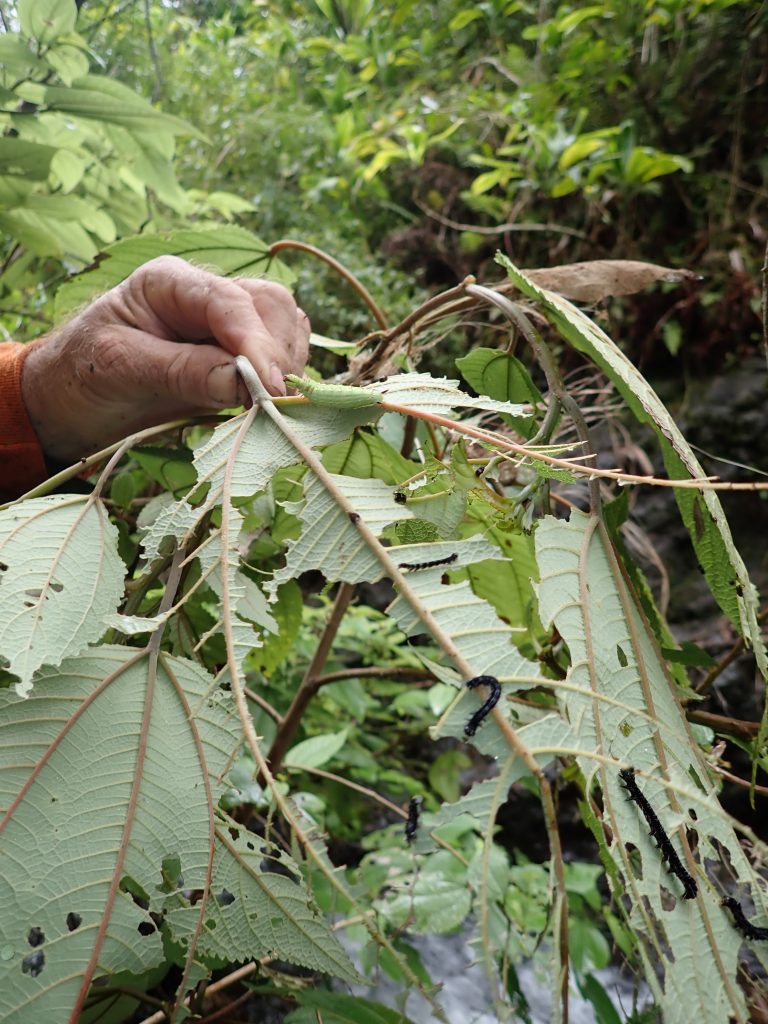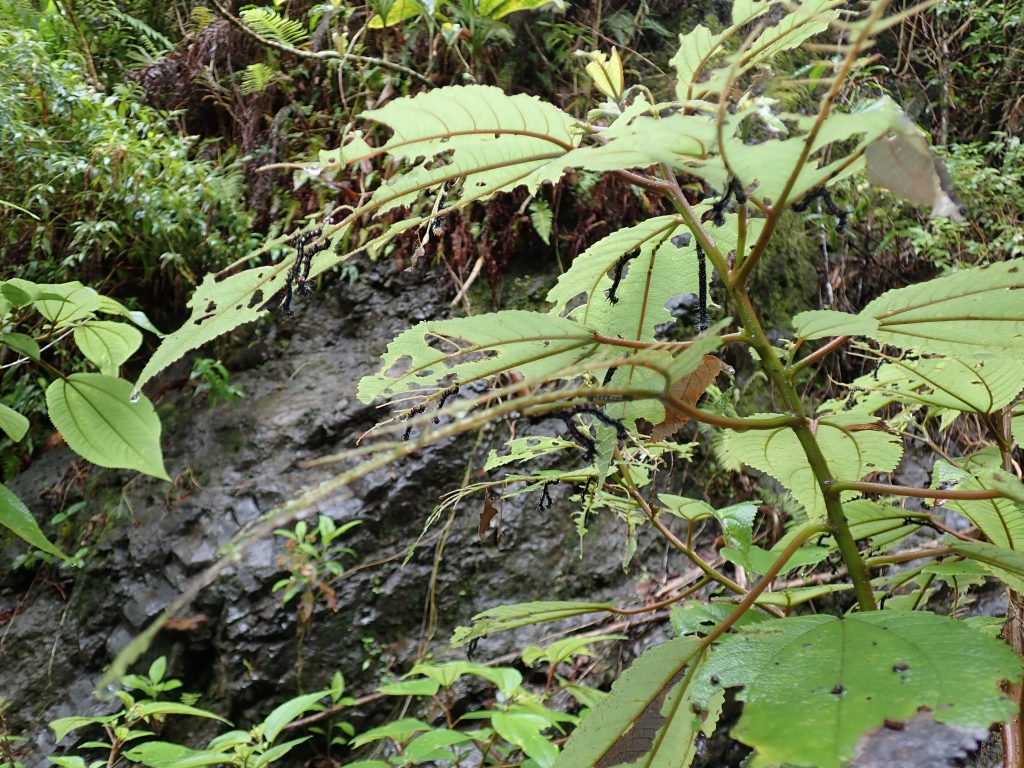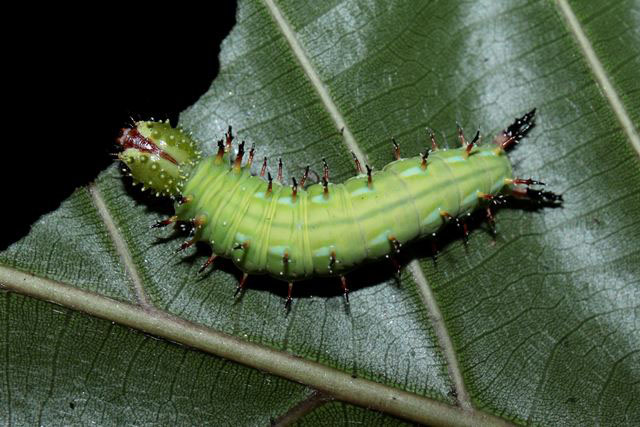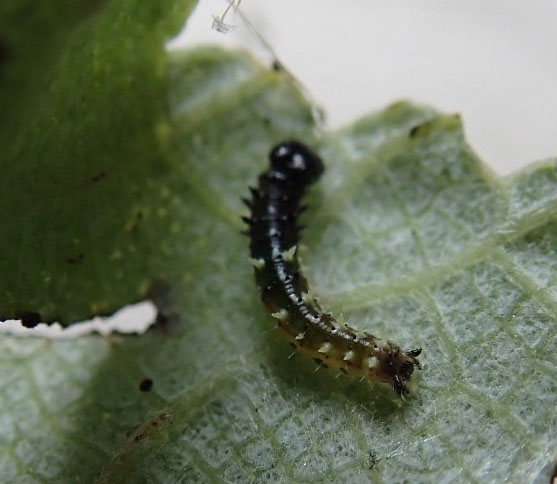Invasive Caterpillar Threatens Rare Native Plants on Maui
When a biologist who was looking for native snails noticed signs of caterpillars feeding on māmaki in Olowalu, he came across a new invasive species. It was a kind of caterpillar he had never seen before; the Arcte coerula (Ramie moth).
Hawai‘i has two native butterflies and many native moths, but Raime moths are native to Southeast Asia. They have been spread by people to the Philippines, Japan, Australia, New Zealand, and now here. During the Fall of 2018 was the first time it had been found anywhere in the United States. After identifying it and conferring with colleagues, reports started coming in from across the island: Olinda, ‘Ulupalakua, Waiehu, ʻĪao, Kahakuloa, Makawao and Ukumehame.
Keahi Bustamente, a Maui-based Pacific Cooperative Studies Unit invertebrate biologist working with the DLNR Division of Forestry and Wildlife says this species is very different from the Kamehameha butterfly caterpillar. “When its trying to scare off predators, this thing is fuzzy, colorful, and rears up its head and waves it around, and it spits. Kamehameha caterpillars don’t do that.”
Raime caterpillars are black and sometimes yellow, with bright orange-red spots and white hairs. Kamehameha butterfly larvae are black when first hatched, and greenish when ready to make a cocoon.
The Ramie moth is laying its eggs on several plants in the Urticaceae family (nettles) such as māmaki and ‘akolea which are food sources for the Kamehameha caterpillar and are culturally important because of their fiber and medicinal qualities. “Māmaki and other plants in that family provide habitat for animals and other plants. They are an important species in wet understories, they protect watersheds,” said Bustamente. Many of the 14 species in the māmaki family are endemic to Hawai‘i, found only here, and some are already critically endangered. This invasive moth can spread with the wind. How it was brought to Maui is unknown, but people could have transported its eggs on the leaves of an imported plant. That’s how it could potentially spread other islands.
When asked about potential control methods, Bustamente notes there are already native and introduced parasitic wasps in the wild. Introducing another might be problematic and requires much more research. For now, more information is needed, and everyone is encouraged to report new sightings.
*Below is a video produced by the state Department of Land and Natural Resources highlighting efforts to protect the Kamehameha Butterfly.

Close up of the Arcte coerula caterpillar (Ramie moth). Photo courtesy DLNR Hawaiʻi.

Kamehameha caterpillar is near the person’s hand in this photo. The rest are the invasive Arcte coerula caterpillars (Ramie moth). Photo courtesy DLNR Hawaiʻi.

Mamaki plants stripped by invasive Arcte coerula caterpillars (Ramie moth). Photo courtesy DLNR Hawaiʻi.

February 24, 2010. Puu Hapapa shelf. Vanessa tameiameiae, Kamehameha butterfly caterpillar on Urera. Photo courtesy DLNR Hawaiʻi.

Newly hatched Kamehameha butterfly caterpillar. Photo courtesy DLNR Hawaiʻi.












